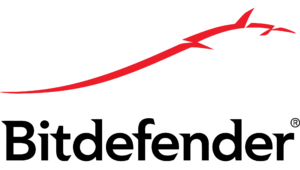Cloud Security
LicencingConsultancy
Usage of the cloud has grown exponentially for organisations across the UK. It has transformed the way users and teams communicate, collaborate and work. This has in-turn changed the way we need to look at securing data, maintaining compliance requirements and gaining visibility of user access and potential threats.
A common question we are regularly asked is, who is responsible for securing the cloud services we use. The short answer is the responsibility is shared so it is vital to understand what area your business will need to cover.
The provider will be liable to secure the actual infrastructure but shared responsibility model changes based on the type of cloud service (IaaS/PaaS/SaaS). Typically the customer will be responsible for managing users and their access, safeguarding the cloud accounts and the connection and of course any data and / or configurations that the customer controls.
Cloud Access Security Broker
Cloud Security Posture Management
Cloud Workload Protection Platforms
Web Application Firewalls
The cloud offers numerous benefits which include:
- Rapid Deployment
- Flexibility
- Low up-front costs
- Scalability
However, securing the cloud is a vital practice and includes things like protecting data at rest and implementing access controls to prevent unauthorized access. It also involves implementing robust security protocols and monitoring for potential threats, as well as having disaster recovery and business continuity plans in place to ensure that critical data and systems can be quickly restored in the event of an incident.
CASB (Cloud Access Security Broker)
CASB enables businesses to analyse, discover, secure and manage cloud applications – providing advanced technology and complete visibility into cloud applications being used across the business. Core features include DLP, Threat Detection & Access Management for cloud apps such as Onedrive, Sharepoint and Dropbox as well as controlling access to other sanctioned and unsanctioned cloud applications. CASB tools are sometimes incorporated into Secure Web Gateways (SWG) and Secure Service Edge (SSE) technologies giving organisations visibility of Shadow IT.
CSPM (Cloud Security Posture Management)
CSPM are tools that help companies identify and remediate risks relating to using the cloud.
When utilising cloud applications, the user is responsible for configuring the cloud and securing the data. A proportionate amount of breaches have occurred due to misconfiguration and a CSPM solution automatically and continually checks for these misconfigurations alerting IT to any issues.
WAF (Web Application Firewall)
Criminals looking to gain access to a network often use web applications as a main entry point.
In addition to filtering, monitoring, and blocking any malicious HTTP/S traffic that tries to access your web applications, a WAF also helps prevent data from exiting the application, protecting your web apps from outside threats.
Cloud Workload & Container Security
Cloud workload protection platforms (CWPPs) are security solutions that are designed to protect cloud-based workloads, such as virtual machines and containers, from cyber threats.
CWPPs typically work by continuously monitoring and analysing cloud-based workloads in order to identify and respond to potential threats. When a potential threat is detected, the CWPP will take appropriate action to block or mitigate the threat.
Other technologies that we can offer around Cloud Security are: API Security, Cloud Application Security & Cloud Monitoring & Analytics and�Cloud based IdP�s and IAM tools.
Talk to a Cyber Advisor
Have a cloud security project or requirement that you wish to discuss with our Cyber Advisors? Give us a call today or we can call you back and discuss the best way to secure your cloud environment.




